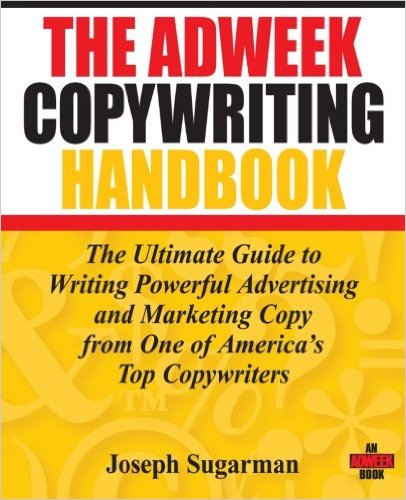The Adweek Copywriting Handbook & Branding: A Comprehensive White Paper
Introduction
The Adweek Copywriting Handbook, authored by Joseph Sugarman, stands as a cornerstone of modern advertising, offering a comprehensive guide to crafting persuasive and impactful copy. This white paper will delve into the core principles outlined in the handbook, exploring their intersection with effective branding strategies. We will also examine contemporary considerations and best practices in copywriting and branding within the evolving digital landscape.
1. Core Principles of Copywriting (The Adweek Copywriting Handbook)
- Understanding Your Audience: Sugarman emphasizes the paramount importance of deeply understanding your target audience. This involves:
- Market Research: Conducting thorough research to identify demographics, psychographics, needs, and pain points.
- Empathy: Developing a deep understanding of your audience's motivations, desires, and fears.
- Creating Buyer Personas: Developing detailed profiles of your ideal customers to guide your messaging.
- Crafting Compelling Headlines: Headlines are the gateway to your message. They must be:
- Attention-Grabbing: Use strong verbs, intriguing questions, or provocative statements.
- Benefit-Oriented: Clearly communicate the value proposition to the reader.
- Intriguing: Spark curiosity and encourage further reading.
- The Power of Storytelling: Storytelling is a powerful tool for connecting with your audience on an emotional level.
- Creating Narratives: Develop compelling narratives that resonate with your audience's values and aspirations.
- Using Storytelling Techniques: Employing literary devices such as metaphors, similes, and anecdotes to engage readers.
- Building Credibility and Trust:
- Social Proof: Leveraging testimonials, reviews, and case studies to build credibility.
- Guarantees and Warranties: Offering strong guarantees to reduce risk and build trust.
- Transparency: Being honest and upfront about your product or service.
- The Call to Action (CTA): A clear and compelling CTA is crucial for driving conversions.
- Specificity: Use specific and action-oriented language (e.g., "Buy Now," "Learn More").
- Urgency: Create a sense of urgency to encourage immediate action.
- Clarity: Make it easy for the reader to take the desired action.
2. The Role of Branding in Copywriting
- Brand Identity: Your brand identity is the foundation of all your marketing efforts, including your copywriting. It encompasses:
- Brand Values: The core principles and beliefs that guide your brand.
- Brand Voice: The unique tone and personality of your brand.
- Brand Messaging: The key messages that you want to communicate to your audience.
- Brand Consistency: Consistent brand messaging across all channels is crucial for building brand recognition and trust. This includes:
- Visual Consistency: Maintaining a consistent visual identity across all marketing materials.
- Messaging Consistency: Ensuring that all your messaging aligns with your brand values and voice.
- Brand Storytelling: Storytelling is a powerful tool for building brand equity and connecting with your audience on an emotional level.
- Brand Narratives: Developing compelling brand narratives that resonate with your target audience.
- Content Marketing: Creating high-quality content that showcases your brand's values and expertise.
3. Contemporary Considerations and Best Practices
- The Rise of Digital: In the digital age, copywriting has evolved to encompass a wide range of channels, including:
- Social Media: Crafting engaging social media posts, captions, and ads.
- Email Marketing: Writing persuasive email subject lines and body copy.
- Website Content: Creating compelling website content, including blog posts, landing pages, and product descriptions.
- Search Engine Optimization (SEO): Optimizing website content for search engines to improve visibility.
- Data-Driven Copywriting: Utilizing data analytics to track the performance of your copy and make data-driven decisions.
- The Importance of Personalization: Personalizing your messaging to individual customers based on their preferences and behavior.
- Ethical Considerations: Ensuring that your copywriting is ethical and responsible, avoiding misleading or deceptive claims.
4. Conclusion
The Adweek Copywriting Handbook provides a timeless framework for crafting persuasive and impactful copy. By understanding your audience, crafting compelling headlines, and leveraging the power of storytelling, you can create messages that resonate and drive results. When integrated with a strong brand identity and a consistent brand voice, effective copywriting becomes a powerful tool for building brand awareness, driving customer engagement, and achieving business goals.
References
- Sugarman, Joseph. The Adweek Copywriting Handbook. John Wiley & Sons, 2003.
- Keller, Kevin Lane. Strategic Brand Management: Building, Measuring, and Managing Brand Equity. Pearson Education, 2013.
- Kotler, Philip, and Kevin Lane Keller. Marketing Management. Pearson Education, 2016.
Note: This white paper provides a general overview. For a deeper understanding, it is recommended to consult the original sources and conduct further research on specific topics.



